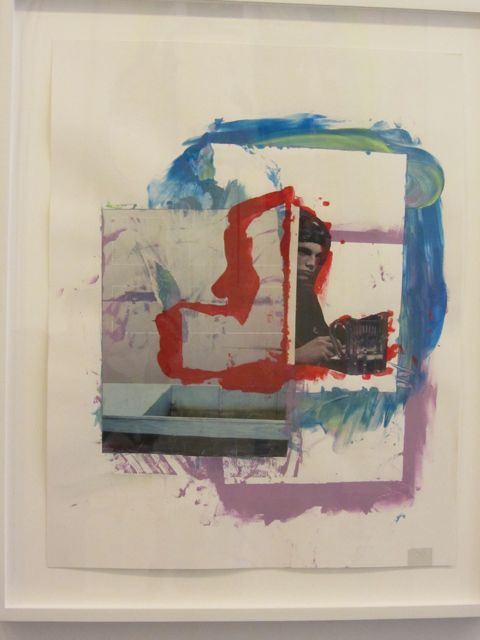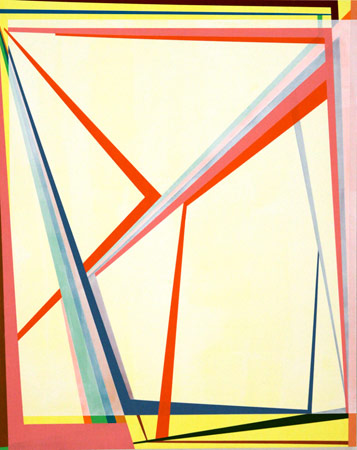Ellen Letcher, Wrestler (2012)
Photography's greatest power is seduction. As a onetime production designer for fashion magazines, Ellen Letcher (b. 1972) understands this better than most. Composed of photographs clipped from glossy publications, her seditious collages pull apart the products she once put together.
This survey show features a decade of Ms. Letcher's work. It also brings together two artists who ran formative Bushwick galleries—Ms. Letcher of the wonderfully named Famous Accountants; and Austin Thomas, whose Pocket Utopia has now relocated to the Lower East Side.
Here Ms. Letcher works to take some of the power out of photography and its use in magazine production by highlighting its fabrication.
Through the introduction of paint, she binds her images to paper and canvas. She also moves her images around, leaving behind outlines where the pictures used to be.
The process might mimic magazine paste-up but doesn't conceal its method of production.
As Ms. Letcher's paint handling has become more sophisticated, her command of imagery has become more authoritative.
By allowing her paint to swirl and carve out space, in works like "Wrestler" (2012) Ms. Letcher takes mass-produced visual culture and reverses it into something of her own.
Details:
Ellen Letcher: Photo Still
Pocket Utopia
191 Henry St., (212) 375-8532
Through July 15
--adapted from The Wall Street Journal, July 7, 2012


